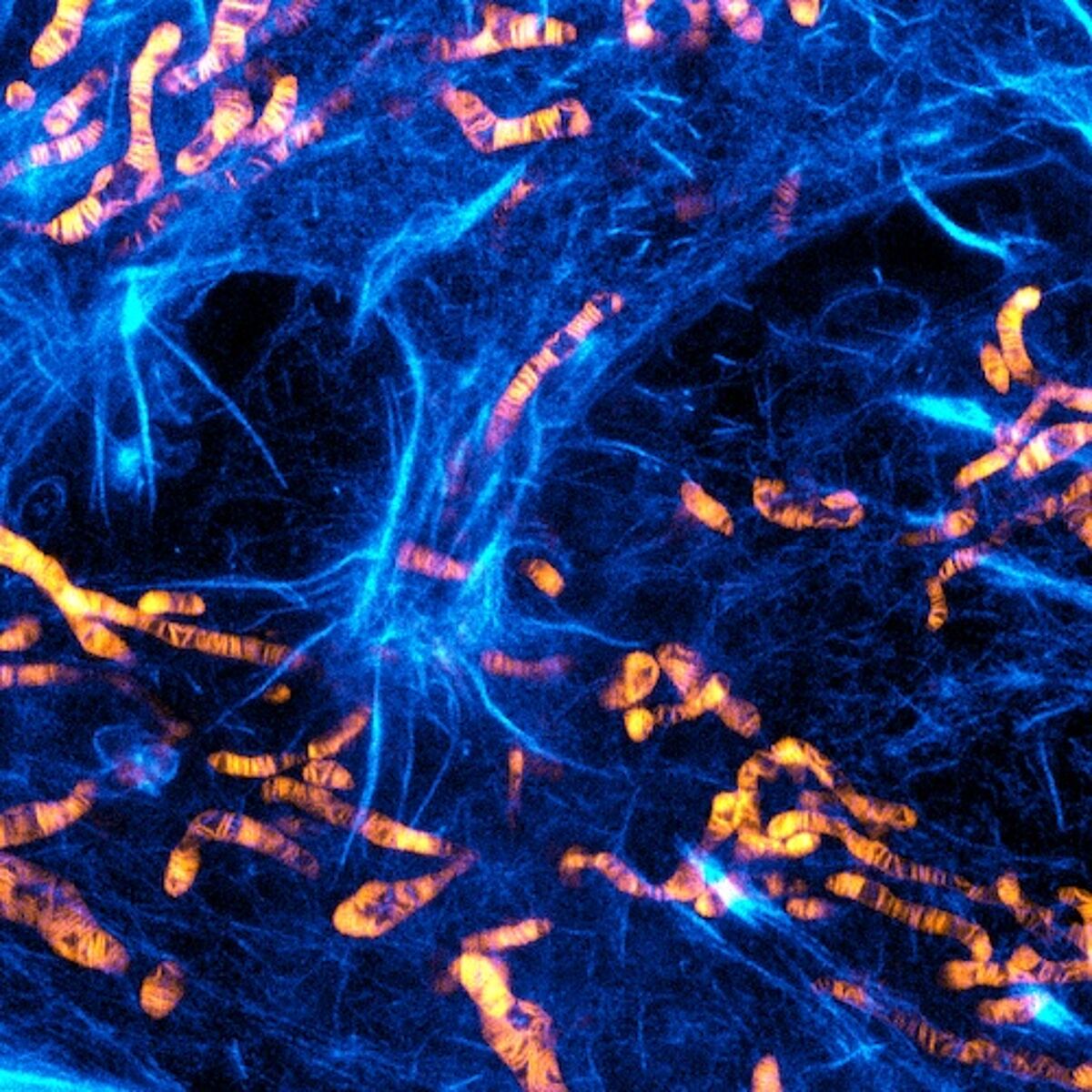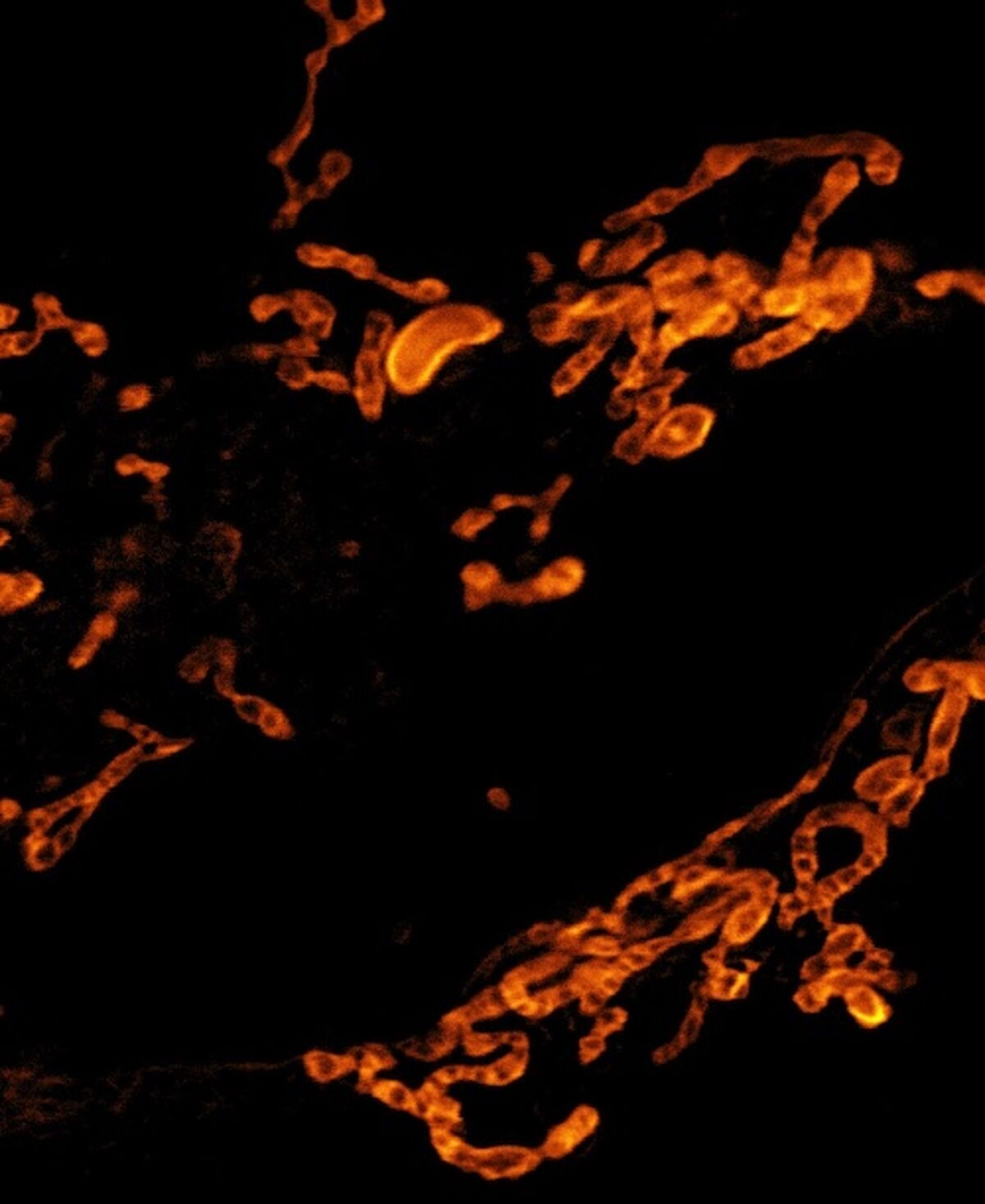Mitochondria are pivotal organelles involved in ATP production, cell signaling, and cell death. To better understand mitochondrial function, advanced live-cell imaging techniques are essential. However, traditional dyes and methods often induce phototoxicity, particularly when used for mitochondrial imaging.
The group of Zhixing Chen at Bejing University recently developed a range of novel mitochondrial dyes which display low background, high photostability and are well suited for extended live imaging of mitochondria.
PKmito probes are cyclooctatetraene-conjugated cyanine dyes. Unlike conventional dyes like Cy3, PKmito dyes demonstrate enhanced photostability without increasing phototoxicity. Specifically, PKmito Red, combined with high resolution microscopy methods (e.g. Hessian SIM), enables prolonged, high-resolution imaging of mitochondrial structures and dynamics.
The group also demonstrates that PKmito dyes maintain stemness in planarian neoblasts, demonstrating their biocompatibility. The study emphasizes the importance of evaluating and minimizing phototoxicity in fluorescent imaging probes for accurate mitochondrial analysis. The innovative triplet-state engineering strategy employed in their research significantly reduces phototoxicity, offering promising applications in live-cell fluorescence analysis and cytometry. This advancement not only enhances mitochondrial imaging but also sets a precedent for improving the toolkit for non-disruptive investigation of various cellular targets.
PKmito dyes are available from Spirochrome for different excitation/emission wavelengths and for live cell and fixed cell imaging.
Original publication:Yang et al. (2020) Chem. Sc. 11 :8506.



